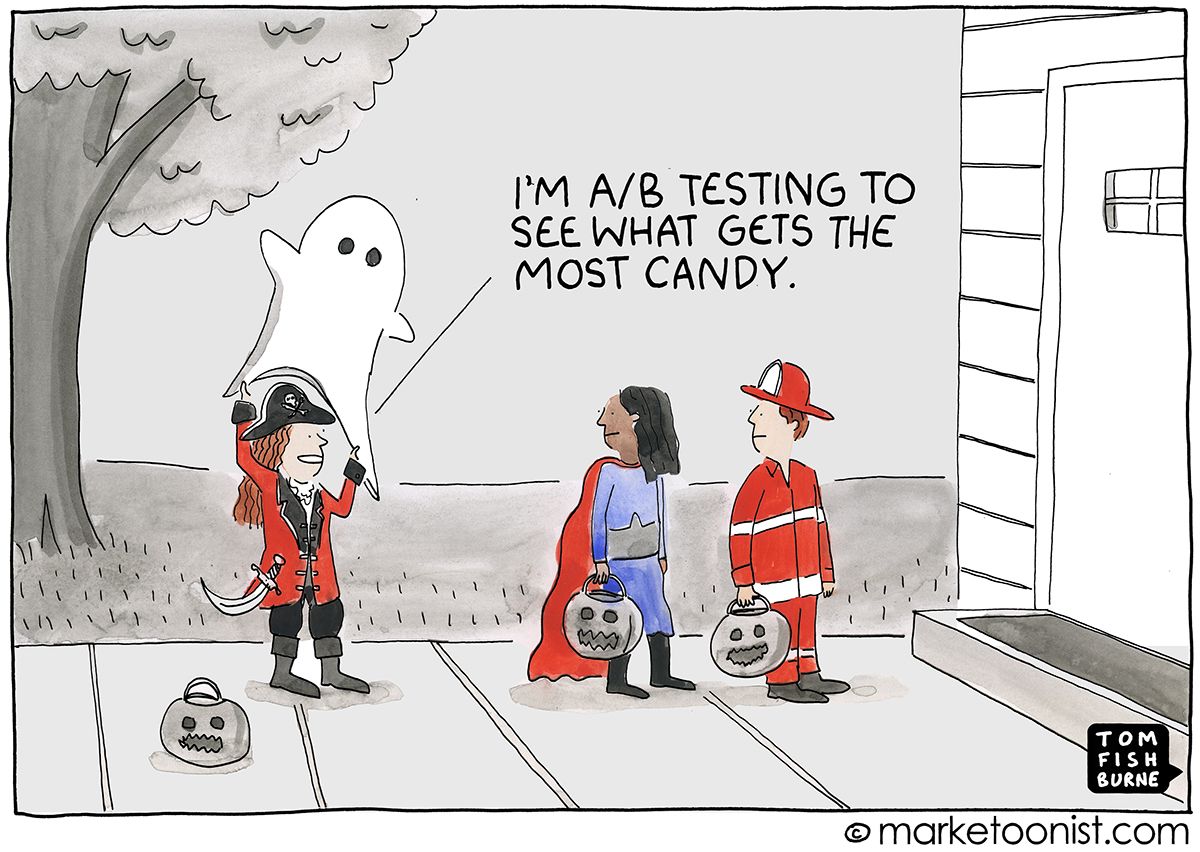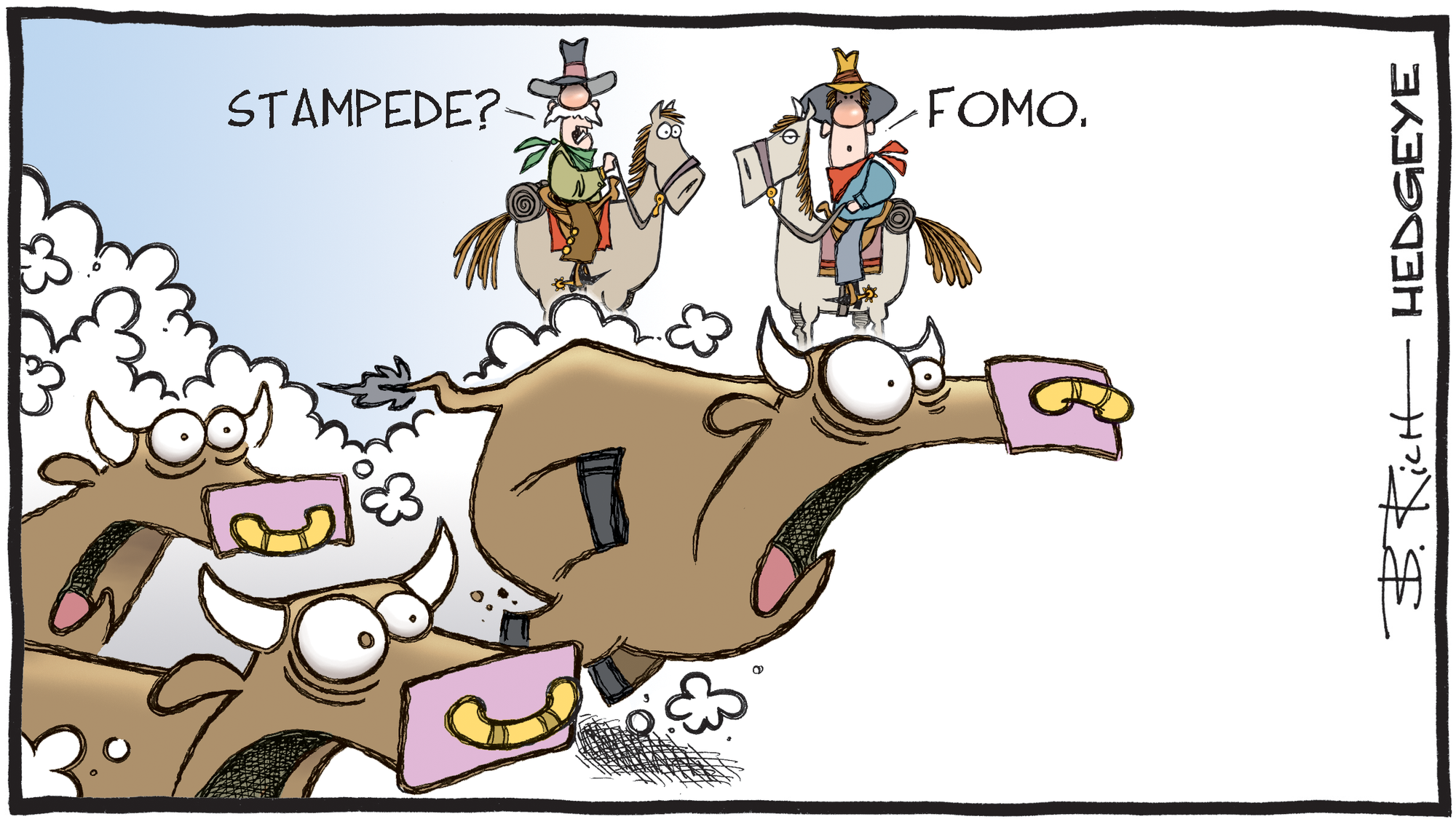We are governed, our minds are molded, our tastes formed, our ideas suggested, largely by people we have never heard of ~ Edward Bernays
Narratives hold immense power in driving behavior.
People are moved by stories. They can have a profound impact on the way we view the world around us. For technology marketers, the challenge lies in getting people to take action and adopt our products.
But how do you actually move the market?
The answer, sometimes, is fear.

Enact a stampede
One powerful strategy to incite action is to sound the alarm, sending a clear and urgent message that triggers the "flight or fight" response. This can be achieved through various means, such as issuing a warning or sending a flare to catch the attention of those who might otherwise remain complacent. By emphasizing the potential negative consequences of inaction, we can create a sense of urgency that motivates the market to take action before it's too late.
This approach can be especially effective in the rapidly evolving realm of technology, where innovation is the norm and failing to keep up can result in significant setbacks.
Markets are herds. By tapping into people's fear of missing out or falling behind, we can not only drive market activity but also generate a stampede toward our product or service.

The key is to strike the right balance between urgency and persuasion.
Fight or Flight
The power of triggering alarm cannot be underestimated. It taps into our primal reptilian brain, which is hardwired to respond to threats and danger. Physiologically, when we hear an alarm, our attention is instantly focused, and we are programmed to take action. This can manifest in two ways - fighting off the danger or fleeing from it. The instinctual response of fight or flight takes over, often overriding rational thought and causing us to act on pure instinct.

As marketers, we are well aware of the power of this emotional response, and we can harness it to our advantage. Triggering alarm is a powerful tool in the marketer's arsenal, and when used effectively, it can be a game-changer for any campaign.
Elon
The SpaceX and Tesla brands share a common thread that makes them stand out: they both sound the alarm, loud and clear. Elon Musk, the carrier of the message, is a master at triggering alarm and inspiring a sense of urgency in people.
For SpaceX, Musk's warning is crystal clear: unless we establish a colony on Mars, humanity risks being a "single-planet species". This dire prospect emphasizes the need for immediate action and underscores the importance of SpaceX's mission.

Similarly, Tesla's mission statement is a call to action to "accelerate the world's transition to sustainable energy". This message triggers alarm by highlighting the urgency of the situation and emphasizing the limitations of traditional fossil fuels. Musk has also stated that our reliance on fossil fuels is "summoning the demon" and that transitioning to renewable energy is the "right thing to do for humanity". By framing the issue in terms of survival and the greater good, Musk inspires people to take action.
Musk's brand messaging is effective because he frequently reminds people of the dangers of climate change and the negative consequences of inaction. The SpaceX and Tesla brands stand out because they are driven by a sense of urgency and a call to action. By sounding the alarm and emphasizing the need for immediate action, Elon Musk inspires people to make a difference and contribute to a better future.
What's the worst that can happen?
The power of the alarm trigger lies in its ability to compel people to take action, even if they initially don't care about the message. This is because consequences are hardwired into our brains, and we are naturally driven to avoid negative outcomes.
Consequences often follow a simple formula: "if you don't do this, then that will happen." By highlighting the potential negative outcomes of inaction, a message can create a sense of urgency and motivate people to act quickly. The key to making this strategy effective is to clearly and compellingly articulate the consequences, emphasizing the severity of the potential outcomes.
The greater the consequences, the more urgently people will focus on the message and feel compelled to take action. In marketing, this can be an incredibly powerful tool. By highlighting the potential negative consequences of not buying a product or taking advantage of an offer, marketers can create a sense of urgency and motivate users to act quickly. This can lead to increased sales, higher conversion rates, and a more engaged user base.
Windows and deadlines
To truly motivate people to take action, it's important to not only emphasize the potential consequences of inaction, but also to provide a clear and compelling deadline. Deadlines are a powerful tool that can heighten immediacy and create a sense of urgency, motivating people to act quickly.
By setting a deadline, brands can create a feeling of exclusivity and excitement around their offerings. A deadline communicates to users that they have a limited window of opportunity to take advantage of an offer, which can make them feel more compelled to act quickly and avoid missing out.

One great example of a brand effectively using a deadline is Amazon's "Prime Day" event. By announcing a specific date and time for the event, and setting a deadline for customers to take advantage of the discounts and promotions offered, Amazon creates a sense of urgency and encourages customers to act quickly. The event also generates buzz and anticipation among customers, who are eager to take advantage of the limited-time offers.
Whether it's a gentle or rigorous deadline, setting a time limit can be an incredibly effective way to increase the likelihood of action around consequences. It can create a sense of urgency, motivate people to act quickly, and ultimately drive better business outcomes.
Scarcity
Brands know that scarcity is a potent marketing tactic that taps into the fundamental human desire for rare or hard-to-obtain items. Scarcity can generate a sense of urgency and exclusivity, making a product or offer more desirable to consumers.
When a product or service is scarce, consumers may feel a sense of competition to secure it quickly, creating an even greater sense of urgency and increasing its perceived value. It can also make a product or service feel more exclusive, which can increase its desirability.
One prime example of a brand that has leveraged scarcity in its marketing is Bitcoin. With a limited supply of 21 million coins, Bitcoin's scarcity has been a critical factor in driving up its value over time. Bitcoin's marketing has focused on emphasizing its scarcity as a key selling point, creating a sense of urgency and exclusivity among investors who want to own the cryptocurrency.

Scarcity has also been used by many other cryptocurrencies as a marketing tool. Some cryptocurrencies limit the total number of coins that will ever be created, while others use scarcity to create exclusivity around new token offerings or other events.
Brands can use scarcity in various ways, such as limiting the quantity of a product available, setting a deadline for a promotion or sale, or creating special editions or variations of a product. By creating a sense of scarcity around a product or offer, brands can increase its perceived value and drive consumer behavior, such as purchasing or taking advantage of an offer before it's too late.
Diminishing returns
While fear can be an effective motivator, it's important to avoid causing panic. Pushing people too far into a state of terror can result in diminishing returns, leading to paralysis and inaction.
As a marketer, you don't want your audience to be so overwhelmed with fear that they become frozen with indecision. It's a delicate balance, but one that can be achieved by carefully managing the level of fear and urgency in your messaging. By creating a sense of urgency without inducing panic, you can inspire action and drive results.
Remember, the goal is to motivate your audience, not terrify them into inaction. So, be strategic in your approach, and use fear as a tool to inspire action, not to paralyze your audience.

